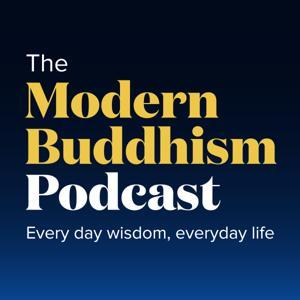"The rain could turn to gold and still your thirst would not be slaked," the Buddha said. He was pointing to the endless cycle of craving, the restless thirst that keeps us searching outside ourselves for satisfaction. Even if we were showered with gold, our longing would not end. So how do we free ourselves from this thirst? In this Fan Favorite episode, we look for the answer in understanding the connection between emptiness and craving.
When Buddhism speaks of emptiness (shunyata), it doesn't mean that nothing exists. It means that nothing exists inherently or independently. Everything arises because of many causes and conditions.
Think about a table. It seems to be a table all on its own. But in truth, it depends on wood, on carpenters, on the label "table," and on our own minds to recognize it. Without these causes (and many more), the table as we know it doesn't exist. Even beauty works this way. If we see a flower as beautiful, we think the beauty is "out there." Yet without our mind, that beauty would never appear. Emptiness reveals that our world is far more fluid and interdependent than it seems.
The Buddha described craving as tanha, which literally means thirst. This isn't just enjoying things; it's clinging to them for happiness or pleasure.
He compared it to tasting honey on a razor's edge. The first taste is sweet, but pain follows. That's what happens when we cling to pleasures, possessions, or people: we suffer when they change, disappear, or fall short of our hopes. Craving always promises satisfaction but never delivers.
At the root of craving is a misunderstanding. We think things exist solidly and permanently, as if beauty, pleasure, or comfort live inside them. But emptiness shows us this isn't true.
When you enjoy a sunset, your mind is part of creating that beauty. When you savor a meal, your mind is shaping the pleasure. But we don't see it this way. We believe the joy is built into the object itself. So we cling, hoping to hold it forever.
Once we understand emptiness, craving begins to dissolve. We see the truth: things are impermanent, interdependent, and shaped by the mind. We can still enjoy them, but we don't need to grasp so tightly.
The Buddha taught that the end of craving is the end of suffering. When we realize emptiness, ignorance loosens its grip. We don't stop enjoying life! We stop demanding that impermanent things give us permanent happiness. Instead of chasing after more, we can finally enjoy and relax in freedom.
References and Links
Buddha.The Dhammapada. Translated by Gil Fronsdale. (Kindle). Shambala, Boston and London, 2011, pp. 78 (Link)
Buddha (1986).The Dhammapada: Verses and Stories. Translated by Daw Mya Tin, M.A. (Website). Edited by Editorial Committee, Burma Tipitaka Association Rangoon. Courtesy .of Nibbana.com. For free distribution only, as a gift of dhamma. Retrieved from https://www.tipitaka.net/tipitaka/dhp/verseload.php?verse=386
Find us at the links below:
Our Link Tree: https://linktr.ee/BuddhismForEveryone
Facebook: https://www.facebook.com/Buddhismforeveryone
Facebook Group: Join our private group at: https://www.facebook.com/groups/sanghatalk/
Website: Buddhismforeveryone.com
Instagram: @buddhism4everyone
X: @Joannfox77
TikTok: @buddhism4everyone
To learn more about virtual classes with JoAnn Fox: Buddhist Study Program
To learn about Life Coaching with JoAnn Fox visit www.BuddhismforEveryone.com/coaching




































